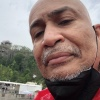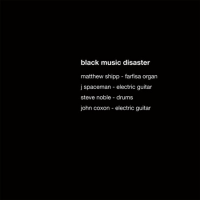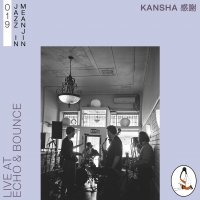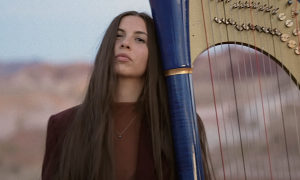Home » Jazz Articles » Interview » Daniel Bennett: The Bear Truth
Daniel Bennett: The Bear Truth

A good friend of mine once told me that great music should always give you chills down your spine. I took his advice.
Moreover what is also refreshing about this young musician is his candor. He readily admits to being very raw when his career began in earnest only a few years ago, not even wanting to initially call himself a jazz artist—though he does say he combined the twang of Bill Frisell's with Jimmy Giuffre's dry folkism. When it is observed that his early recordings had a sameness about them, his response was honest and vulnerable. And the recurring motif of using a bear as a theme... is unique and irresistible. You will see.
All About Jazz: Would it be accurate to say that you represent the first generation of jazz artists for whom using the Internet and mixed media—in your case animation—are a given, in terms of using these tools to launch your career?
Daniel Bennett: Absolutely! The Internet has revolutionized every single aspect of music career management and development. However, I constantly push myself to work out my development in the physical realm too! It's so important for jazz players to constantly collaborate, practice, travel, and interact with listeners. Sometimes the Internet can be a negative distraction for artists.
I will say that the Internet has become an amazing tool for marketing. A great example of this is the ongoing concert series that the Daniel Bennett Group curates at the Triad Theatre in Manhattan and the Cambridge YMCA Theatre in Boston. We have recently shared billings at both of these venues with artists like Bill Frisell, Charlie Hunter, James Carter, Greg Osby, Billy Martin and Steve Kuhn.
And the amazing thing is that we have never used print advertising or radio to promote any of these concerts. All of our marketing is done online.
We use websites like Facebook, Twitter, Reverbnation, All About Jazz, and countless others. The Internet has also changed the way we sell our music. A working band can now record and produce albums independently and then simply enlist a service like CD Baby to distribute their music to iTunes, Amazon, Rhapsody, Napster, and hundreds of other sites.
However, as I mentioned earlier, a band must have a physical following and real world experience in order to truly be relevant. It's important for artists to remember that music is crafted and perfected in our practice rooms, far away from the allure of the Internet. It's really a delicate balance.
AAJ: Let's delve into your roots.
DB: I grew up in Honeoye Falls, New York, a very small town in the Rochester area. I started playing the saxophone when I was ten years old. My first band director encouraged me to play trumpet. She felt that my lips were better shaped for a brass instrument. When asked what my top three instrument choices were, I marked saxophone, saxophone, saxophone!
Needless to say, my mind had been made up. I remember when my older sister took me to a high school jazz concert. I heard a saxophonist named Chris Oldfield and was absolutely blown away by his sound. Keep in mind—I grew up in the country. We didn't get to hear jazz on a regular basis. As I got older, I joined the jazz band, wind ensemble, marching band, and began playing in music theater pit orchestras at the middle school and high school. I also began taking saxophone lessons from a renowned local composer and woodwind-doubler, Greg Knapp. In 1996, our high school jazz ensemble placed second in the Essentially Ellington jazz competition. I can remember traveling to New York for the finals. It was my first trip to the city. As a finalist in the competition, we performed a piece with Wynton Marsalis. What an amazing experience for a bunch of high school kids from the country!
Around that same time, I began to teach myself guitar. This was probably the most important moment in my early development. I started a rock band, and spent every waking hour writing songs and rehearsing. I still write all of my music from the guitar to this day. I can remember traveling through the cold streets of Rochester with my electric guitar, acoustic guitar, and four saxophones!
We would play in coffee houses, homeless shelters, churches, and pretty much any venue that would have us! I remember driving to a local mall on Christmas Eve. We showed up unannounced, set up our gear and played Christmas songs for people. It lasted about thirty minutes before we were shut down by mall security and escorted off the premises.
Upon graduating from high school, I attended Roberts Wesleyan College, a small Christian school in the Rochester suburbs. I was fortunate enough to study with world-class artists like pianist Joe Santora, Nancy Boone, Michael Landrum, and Paul Shewan, to name a few. I immersed myself in the Rochester jazz scene, performing in all of the top venues and festivals around the city, and also playing in church three times a week!
In 2002, I moved to Boston to attend grad school at the New England Conservatory. I was one of those oddballs who studied both jazz and classical music. I took lessons with Ken Radnofsky, Jerry Bergonzi, and George Garzone. In addition, I performed in an ensemble led by percussion guru, Bob Moses. I was fortunate enough to also perform concerts at the school with Bob Brookmeyer and Steve Lacy.
This was a very stressful time in my life. I can remember playing in the NEC wind ensemble and then running off to a jazz performance with Bob Moses. I was playing some pretty serious classical music from the likes of Pat Harbison, Ibert, Dahl, Desenclos, and Glazunov. At the same time I was performing in improv classes with Jerry Bergonzi, Ken Schaphorst, and Bob Moses. I also studied microtonality with the late-great Joe Maneri. I thank the Lord that I made it out of NEC in one piece!
AAJ: Do you view yourself as a jazz artist?
DB: Most people would categorize me as a jazz artist. That works for me. I actually perform jazz standards on quite a few gigs. I have been labeled as the experimental folk jazz guy, but I actually love playing standards as well. To me it's all just music! All I care about is entertaining and uplifting my audience. I don't follow jazz trends at all. A good friend of mine once told me that great music should always give you chills down your spine. I took his advice. I won't listen to music or write music unless I get chills! I really mean that.
AAJ: When you came to New York, did you have in mind following the traditional jazz route of being in a noted band as a sideman? Or is that, at this point, an outdated mode for success in the industry?
DB: Wow, great question! I believe that every artist should hone their skills by playing as a sideman. Being around older, experienced musicians is so crucial! Unfortunately, the apprenticeship model is dying. But I really do think that it's important to constantly learn from the older generations.
Most people would probably be surprised to hear that from me. People seem to think that I write music in a vacuum. Nothing could be further from the truth. I constantly challenge myself to play sideman dates in as many different settings as possible. I spent three years playing in a world-renowned Armenian folk-jazz ensemble called Musaner. The group was comprised of some cutting-edge veteran musicians from the Boston area. We toured Italy and Switzerland and played some great shows around New England. I learned a lot during that time.
AAJ: Who were the veteran Boston cats that you worked with?
DB: Musaner had some amazing players I got to work with while I was in Boston. Ken Field was the lead alto player in the band. Ken also leads the renowned Revolutionary Snake Ensemble. The group had a rotating cast of top rhythm section players. Mike Rivard of Club d'Elf would play bass on some gigs, along with Blake Newman. Blake is one of my favorite bassists to work with. I still hire Blake whenever I am playing in Boston. He has been on the Boston scene for close to 20 years.
In addition to my work with Musaner, I was able to work with other veteran musicians, like bassists Bruce Gertz and Bruno Raberg. Another great Boston player is pianist Michael Shea. Michael and I performed together a few times and we used to jam somewhat regularly during my last year in Boston. Michael is a true journeyman and Boston legend. I learned a lot from him.
I think my biggest thrill was sharing a double bill with legendary Boston saxophonist Jerry Bergonzi. As I mentioned earlier, Jerry was also my teacher at the New England Conservatory. My band performed with Jerry's trio at the Cambridge YMCA Theatre back in 2007. I think I studied every single note that came out of his saxophone during that concert! Jerry is also one of the kindest and most gracious people I have ever known.
AAJ: Very few relatively new artists come out with a series of thematically related recordings as the first pieces of their discography. Please talk about each of your five recordings. And what is this Bear thing all about—could you please explain that for our readers?
DB: Our debut album was We are Not Defeated (Tri-Head, 2004). It was really a crash course in our early folk-jazz concept. At that time, our music had a very raw quality that leaned towards folk rock more than jazz. As time progressed I began composing songs that featured more improvisation and a more balanced fusion of jazz and folk. Keep in mind I had no real reference point for this music. Very few prominent saxophonists have ventured into the American folk realm. Jimmy Giuffre is one of the few saxophonists who dared to explore folk music pretty extensively. Oddly enough, I think Ornette Coleman also has a certain folk twang in his sound.
I developed the bear concept in the winter of 2004. I had ten compositions that were ready for release, and a very active trio that consisted of Chris Hersch on acoustic guitar, John Servo on bass and myself on alto sax and flute. I have a real love for visual art, specifically cartoon animation. I wanted to create a concept where an artist would develop a storyline based on the music. I teamed up with Timothy Banks. Timothy has done work for Cartoon Network and a host of other great companies. I created a world of fictitious bears and let Timothy take the story in his own direction, and the result was A Nation of Bears (Bennett Alliance, 2007).
The album had more success than I had ever imagined. People loved the cartoon album illustrations and they could also really connect with the songs. A year later we released The Legend of Bear Thompson(Bennett Alliance, 2008). By this time I had already decided that this would be a trilogy of albums and the storyline became more elaborate with each album. Peter Lazarski designed the artwork. The album featured a stellar line up, featuring guitarist Brant Grieshaber and Rochester-based drummer, Sean Jefferson.
Between 2006 and 2009, I put the trilogy on hold in order to focus on live shows. The Daniel Bennett Group performed over 150 dates during that time. In the spring of 2009, the group performed a double bill with the Charlie Hunter Trio at the Cambridge YMCA Theatre. A week after the show, someone emailed me live audio that they had bootlegged at the show and to my surprise, the audio quality was great! So I decided to get the audio mixed and mastered, and we released a live album, entitled Live at the Theatre(Bennett Alliance, 2009). I think this album really captures the raw essence of our folk-jazz.
In 2010, I moved to New York City. A few months before the move, I met producer Jessie Gonzalez, who really dug what we were doing and invited us up to 9B Recording Studio in Milford, Massachusetts. A few months passed and I began to settle into life in New York, and I had a brand new NYC-based band. However, I had begun the trilogy in Boston, so it was fitting for me to complete the trilogy there. I drove up to Massachusetts for one weekend and recorded Peace and Stability Among Bears(Bennett Alliance, 2011). The album was our epic conclusion to the trilogy. We put every last bit of heart and soul into this album—some compositions boarder on avant-garde, while others have a folk feel. You can also hear a strong minimalist current throughout the album. Various critics at media outlets like the Jazz Police and All About Jazz listed the album in their top-ten CD releases of 2011. I am very thankful for that!
The bear concept is meant to be fun and light-hearted, much like our music. The story is about a bear named Bear Thompson. He befriends Andrew the Panda and a host of other characters. The story is open-ended at times, much like our music. It can mean a lot of different things for different people! I still hope to create an animated movie about Bear Thompson, now that the trilogy is complete. Stay tuned!
AAJ: If there is one criticism regarding your recordings thus far, it is the sameness of the discs, if you listen to them as a whole. Do you envision a radical departure in your future writing and performing?
DB: That is a great question. We are already preparing for a brand new album that will be out in the fall of 2012. The disc is going to be a radical departure from our classic folk-jazz sound.
In the past, I have played mostly alto sax and flute on disc. I am constantly expanding my own creative palette by appending new instruments, sounds, and timbres. The trilogy had a unifying sound throughout, which was definitely intentional on my part. But now is the time for new sounds and new ideas!
I am also excited because this will mark the first recording for my New York band. The new CD will feature guitarist Mark Cocheo, bassist Peter Brendler and Tyson Stubelek on drums. Mark Cocheo is one of the most versatile musicians in New York. He can play odd meters with a very gentle, but groovy touch. Cocheo also teaches at New York University.
Tyson Stubelek is one of the top drummers around, and a master at playing an array of styles with a seamless fluidity. And Peter Brendler has become one of my favorite bassists. He has a beautiful tone and an impeccable sense of time. I also have a rotating cast of New York players for my live band, some world-class musicians, like drummer Brian Adler, pianist Jason Yeager, and bassist Mark Lau. The list goes on and on!
AAJ: Are you at a point in your career where you are just playing music without having to work a day job?
DB: I am playing music full time now. I split my time between bandleader gigs and sideman dates.
AAJ: Give us a glimpse into the life of a young working musician. What is your typical day like in terms of the musical and non musical things—without being too invasive—things which you do on a given day. What kind of practice regimen do you have and what materials (i.e. books, scores etc.) do you use? What kinds of musical challenges are you dealing with?
DB: My typical day is pretty intense. I wake up around 7:30am. I always try to start the day with prayer and some quiet time—before the chaos begins! Mornings are spent practicing and networking online. I generally try to practice at least three hours a day. I have musical theater woodwind books to practice.
I recently completed an off-Broadway show called Crab House. I perform frequently with Theater for the New City, Westchester Sandbox Theatre, In the Wings Productions, and many other NYC theater companies. In addition, I am always practicing new classical material that comes my way.
I recently had a big classical performance at Irvine Auditorium at the University of Pennsylvania, playing with the amazing classical pianist, Graeme Burgan. We played 20th century works by composers like Paul Creston and others, and some Rachmaninoff transcriptions. I am in the process of writing new music for my band, and I have been learning some new tunes by ear and transcribing some Paul Desmond solos. One of my biggest struggles as a performer is being able to switch fluidly between the jazz and classical realm. You really have to train yourself to sound authentic in both worlds. And at the same time, you have to be able to craft your own personal sound. It's a never-ending struggle!
The gig schedule is very busy. I am in Boston every Wednesday night to play at the Liberty Hotel, and perform quite regularly at venues throughout Connecticut, New Jersey and New York. The Daniel Bennett Group performs regularly at Tomi Jazz Club right here in Manhattan. I also teach private saxophone lessons at the New York Jazz Academy, a really high-powered music school based right here in New York City and run by saxophonist Javier Arau. I really enjoy teaching there and being able to work with all of the amazing musicians that come through.
AAJ: Measuring your own career thus far and using it as a yard stick; what advice would you give to a young jazz artist just looking to embark on both New York City and a career in jazz?
DB: Honesty and integrity are crucial in this business. As a bandleader, you have to ensure for each venue that you can bring an audience and that you will sound your best. You also have to assure your musicians that they will be paid and well fed! There is a lot of pressure on the bandleader to make good things happen. Be strong and never let them see you sweat!
I would also encourage musicians to get familiar with the music business from all sides. I was actually the booking agent at three jazz venues when I lived in Boston—Om Restaurant, The Fireplace, and the Stork Club. I did this at the time because I wanted to help grow the jazz scene in a positive way. It also allowed me to book my own band quite regularly.
While doing this, I also witnessed some of the awful business practices of certain jazz groups. There were bands that felt they deserved lots of money and perks, yet they steadfastly refused to advertise and share some of the workload. Now, I am a full time musician, so I understand that musicians must be paid well. However, you have to earn your status through touring, recording, and generating your own audience. I'm a capitalist. You have to earn your keep. You can't just step out of music school and start demanding top dollar. Venues don't really care if you won some award at some silly jazz competition in college.
The New York scene is overflowing with opportunities. You just have to look. That brings me to my next point. Don't complain about the music scene! The music scene is not waiting for you to arrive on your gold chariot. The music scene does not owe you anything. That's not how it works. Create your own scene. Build from the ground up. Be flexible in your approach. Some venues don't pay as well as others. Adjust your tactics by offering a smaller sized group or shortening the length of your performance. Don't be too quick to say no to a potential gig.
The name of the game in New York is to be willing to adjust and adapt to each situation. When I am playing pit orchestra gigs, I have to focus and adapt my sound to fit into that environment. If I am doubling on flute or clarinet, I have to make sure that my sound is clear, balanced and stylistically appropriate to the genre of the show! I have to really abandon a lot of my jazz tendencies. It is common for me to play a theater gig and then run off to a club to lead my band. This requires a great deal of musical shape shifting!
I think it is also very important to travel. As I mentioned, the Daniel Bennett Group has regular gigs in New York, New Jersey, Connecticut and Massachusetts. And I am excited to announce that the band is now playing regularly at the Cuban Revolution Restaurant in Providence, Rhode Island. This means some late nights and frequent bus trips. It's a sacrifice, but the end goal is that I can choose to play the music that I want to play and create a broad audience in various cities.
Lastly, be kind and courteous to the people around you. We are only on this earth for a short time. This is just music. A wise man once told me, "Worship God and serve the people." I like that.
Tags
Daniel Bennett
Interview
Ludwig vanTrikt
United States
Bill Frisell
Jimmy Giuffre
Charlie Hunter
James Carter
Greg Osby
Billy Martin
Steve Kuhn
wynton marsalis
Jerry Bergonzi
George Garzone
Bob Moses
Bob Brookmeyer
Steve Lacy
Harbison
Joe Maneri
Ken Field
Mike Rivard
Blake Newman
Bruce Gertz
bruno raberg
Ornette Coleman
Chris Hersch
Brant Grieshaber
Sean Jefferson
Mark Cocheo
Peter Brendler
Brian Adler
Jason Yeager
Mark Lau
Paul Desmond
Javier Arau
PREVIOUS / NEXT
Support All About Jazz
 All About Jazz has been a pillar of jazz since 1995, championing it as an art form and, more importantly, supporting the musicians who make it. Our enduring commitment has made "AAJ" one of the most culturally important websites of its kind, read by hundreds of thousands of fans, musicians and industry figures every month.
All About Jazz has been a pillar of jazz since 1995, championing it as an art form and, more importantly, supporting the musicians who make it. Our enduring commitment has made "AAJ" one of the most culturally important websites of its kind, read by hundreds of thousands of fans, musicians and industry figures every month.



























